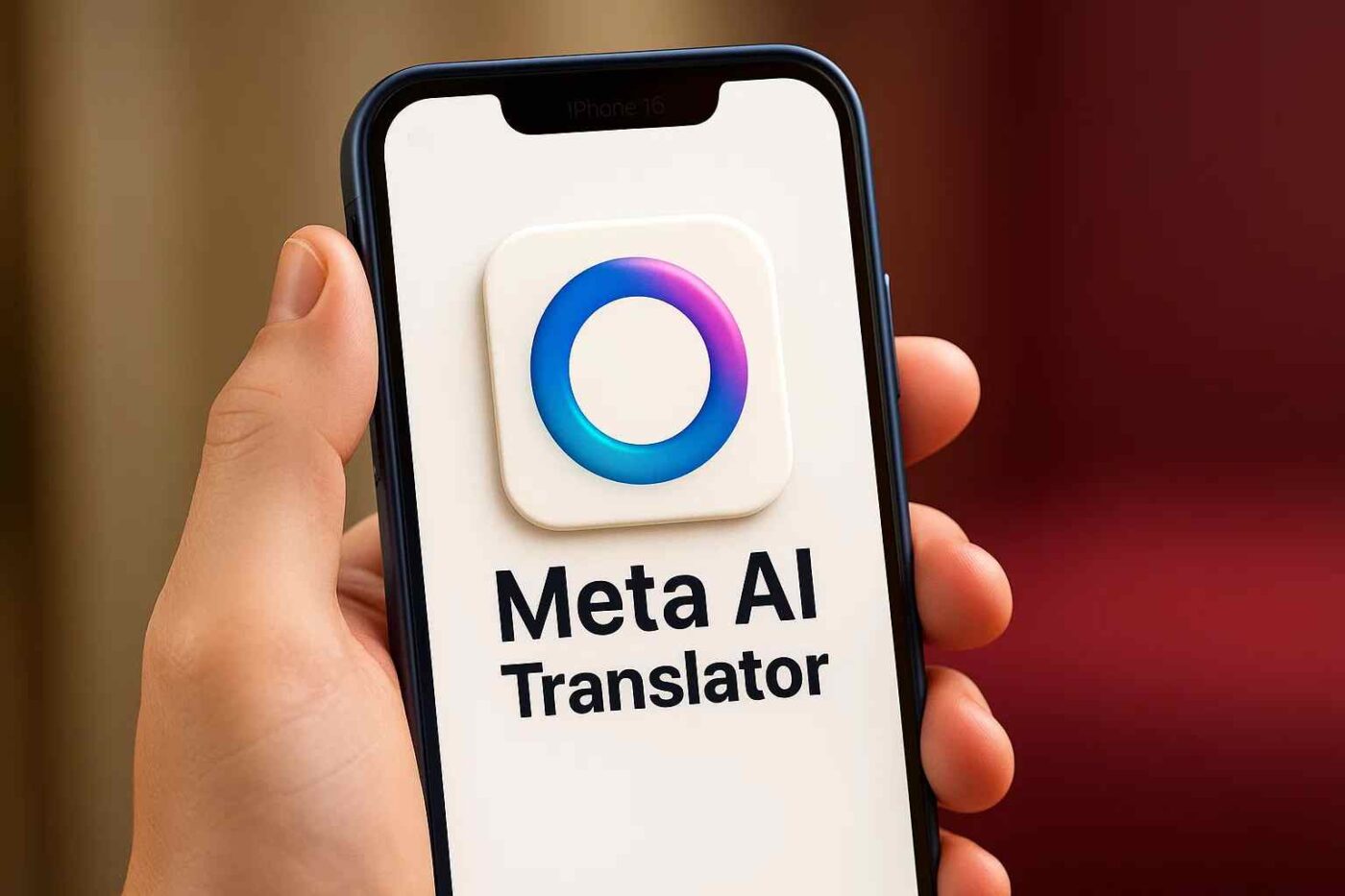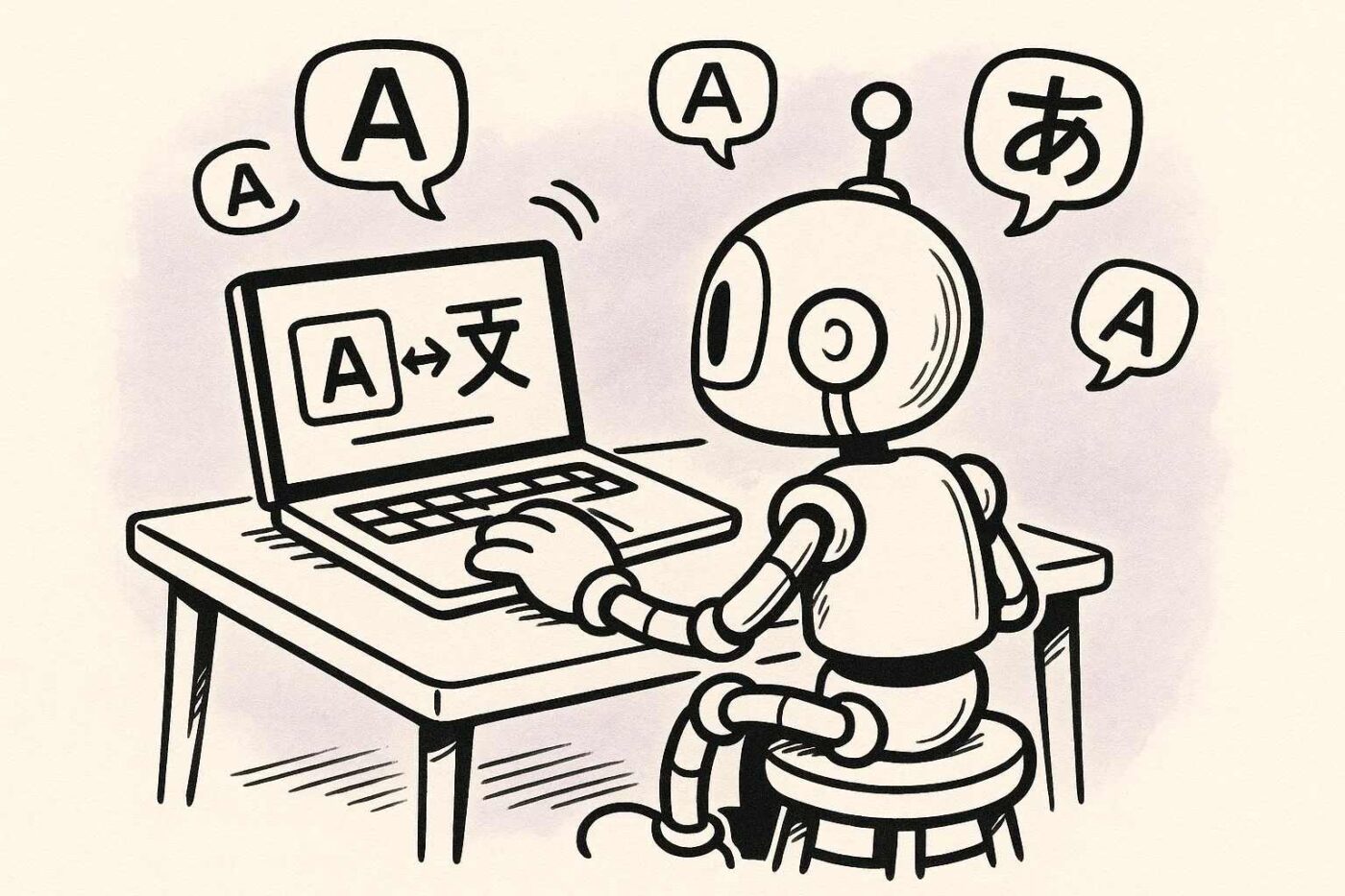Top 5 Alternatives to Google Translate for E-Commerce
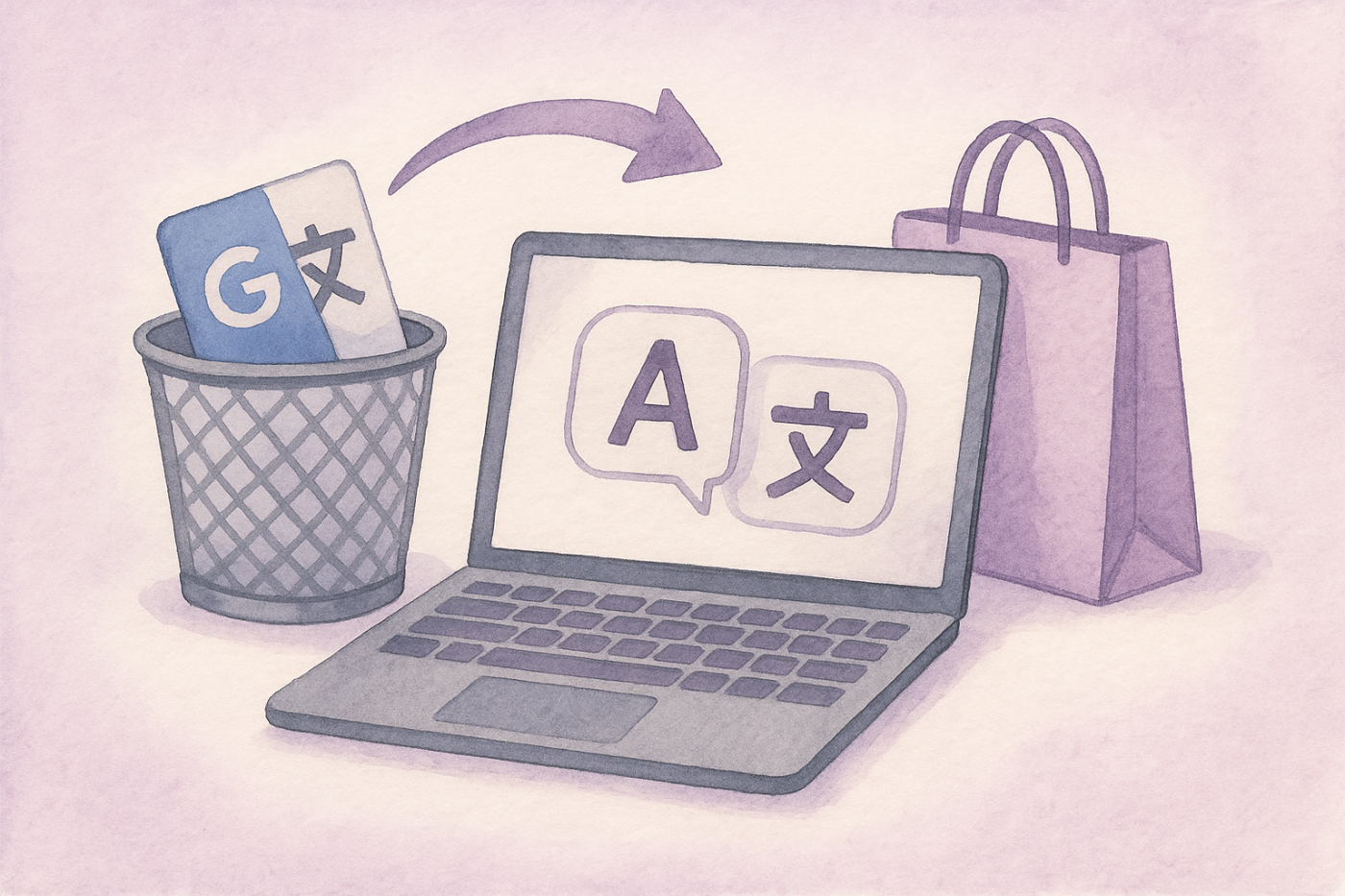
If you ask anybody on the street about translation tools, they will mention Google Translate, and very few of them will know any alternatives… Way too many e-commerce store owners make the mistake of using it for their business, just because they don’t know other ai translation tools.
In the fast-evolving world of global e-commerce, language is more than a barrier, it’s a business-critical differentiator.
With over 80% of online consumers preferring to shop in their native language, the ability to deliver culturally nuanced, linguistically accurate, and SEO-friendly content isn’t optional, it’s essential.
For years, Google Translate has been the default tool for businesses trying to bridge language gaps quickly.
It’s accessible and fast, but that convenience comes at a cost.
Google Translate often stumbles on the complexities that define e-commerce success: maintaining brand tone, handling structured content like product specs and checkout flows, and preserving SEO integrity across multiple markets.
That’s especially problematic in Europe, a region where 24 official languages meet complex regulatory frameworks like GDPR, and where localization isn’t just a competitive advantage, it’s a requirement.
This guide explores five advanced translation platforms that go well beyond Google Translate.
Each offers robust capabilities specifically built for the e-commerce space, from seamless CMS integration to multi-engine AI, GDPR compliance, and multilingual SEO.
Whether you’re a boutique shop in Berlin or a cross-border marketplace scaling through Southern Europe, the right solution can unlock massive returns.
Let’s take a closer look.
Comparison at a Glance
| Feature | Weglot | DeepL | Transifex 🥉 | Smartling 🥈 | ConveyThis | Ovesio 🥇 |
|---|---|---|---|---|---|---|
| E-commerce Integration | ✅ | ⚠️ | ✅ | ✅ | ⚠️ | ✅ |
| Euro Language Coverage | ✅ | ✅ | ✅ | ✅ | ⚠️ | ✅ |
| SEO Optimization | ✅ | ⚠️ | ✅ | ✅ | ⚠️ | ✅ |
| Multi-Engine AI | ⚠️ | ❌ | ✅ | ✅ | ❌ | ✅ |
| API/Workflow Support | ✅ | ✅ | ✅ | ✅ | ⚠️ | ✅ |
| GDPR Compliance | ✅ | ✅ | ✅ | ✅ | ⚠️ | ✅ |
| Cost Efficiency | ⚠️ | ⚠️ | ❌ | ❌ | ✅ | ✅ |
✅ = Strong, ⚠️ = Moderate, ❌ = Limited
From this table of alternatives to Google Translate, a clear pattern emerges: while many tools excel in one or two areas, Ovesio consistently checks every box, from integration to language coverage and cost control, making it a standout for European e-commerce businesses aiming to scale smartly.
Plus, Ovesio has integrated DeepL, OpenAI, Gemini, Microsoft Translate & Google Translate… so instead of using only one of these… you can use all 5 of them at the same time and automatically.
Let’s go deeper.
5. Weglot: Fast and SEO-Friendly for SMBs
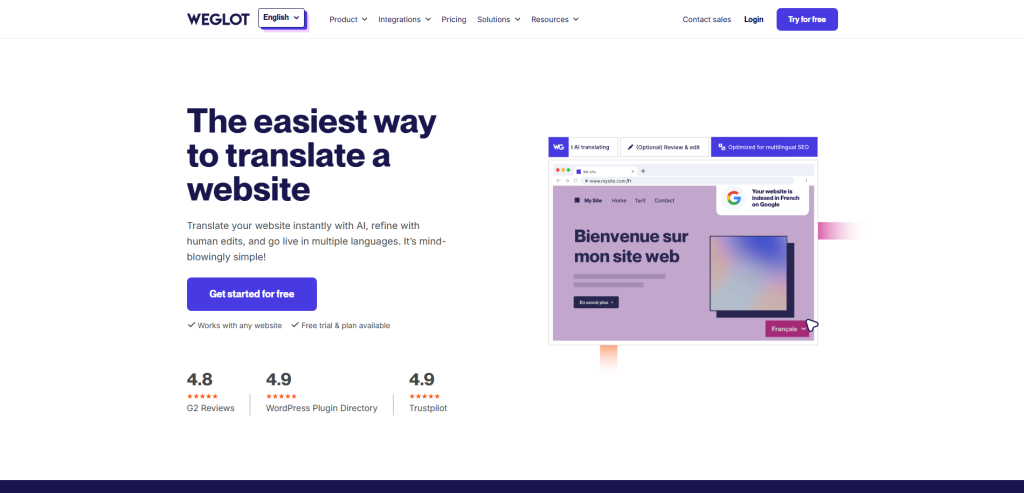
For small and midsize online retailers looking to test scaling internationally without heavy technical overhead, Weglot offers a frictionless entry point into multilingual e-commerce.
Designed with ease of use at its core, Weglot allows businesses to translate their entire storefront in minutes, no coding required.
Strengths
Weglot shines through its plug-and-play integrations with major e-commerce platforms like Shopify, WooCommerce, BigCommerce, and Magento.
The platform detects and translates every element of a website, from product descriptions to buttons and checkout flows, ensuring full multilingual coverage.
Its SEO optimization features are a standout: Weglot automatically generates language-specific URLs and hreflang tags, helping your translated pages rank in regional search engines.
A built-in visual editor allows real-time adjustments, giving store owners precise control over how translations appear in context.
Weak Spots
Weglot relies on machine translation engines like Google and DeepL but offers limited transparency and control over which engine is used when. There’s not even confirmed if they use Google and DeepL.
As businesses scale and require more advanced customization or QA, the platform’s pricing tiers can become steep.
Plans are based on word count and translated languages, meaning larger catalogs see costs climb quickly.
If you have fewer products, it’s okay… but if you have hudrends or even thousands, the costs grow exponentially.
Best For
Small retailers seeking a fast, effective, and SEO-ready translation solution to test new markets, without dedicating in-house engineering resources.
Pricing
Starts at €15/month for basic plans, with a free tier covering up to 2,000 words. Pricing increases exponentially with additional languages and higher word limits.
Which places it amongst the affordable, but manual, alternatives to Google Translate.
4. DeepL: High-Precision for Specific Language Pairs
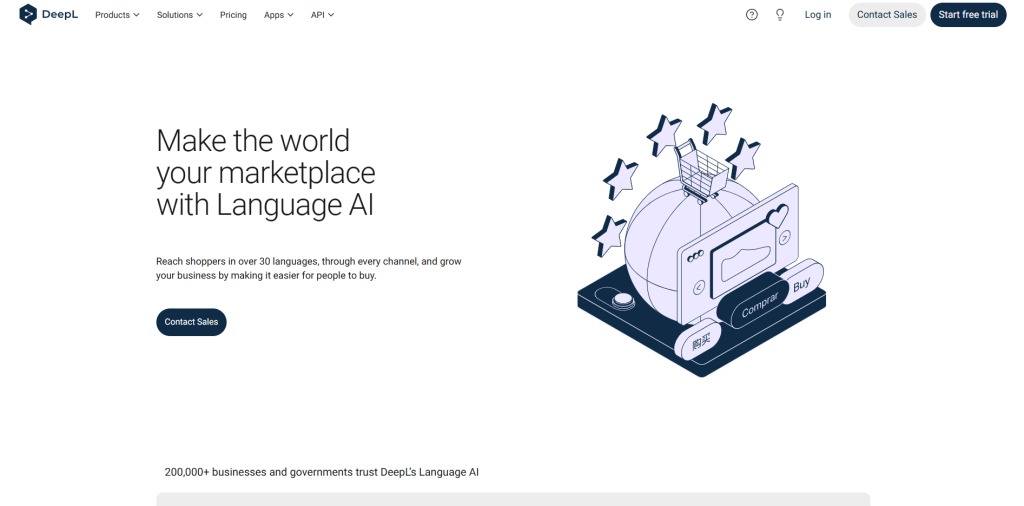
When quality trumps quantity, DeepL leads the pack. (that’s why competitors like Ovesio uses them in their systems)
Known for its exceptional linguistic accuracy, particularly in German, French, and Spanish, DeepL is the go-to platform for businesses where tone, nuance, and fluency matter more than speed or scalability.
Strengths
DeepL’s proprietary neural network architecture consistently outperforms other machine translation tools in blind linguistic tests.
A 2024 update to its core model improved accuracy by 1.7x across key language pairs, reducing the need for manual edits, a crucial time-saver for content teams focused on brand integrity.
The platform supports 32 languages, with a focus on European ones, making it ideal for content requiring native-level fluency.
Its ability to retain context and idiomatic phrasing makes DeepL a favorite for brands that rely on carefully crafted product messaging or technical precision.
Weak Spots
DeepL is built for translation quality, not for end-to-end e-commerce workflows.
It lacks direct integrations with CMS platforms, checkout systems, or SEO frameworks, and doesn’t handle hreflang, metadata, or product feed automation natively.
That means businesses often need to build custom workflows or supplement with third-party tools.
Which can cost hundreds of thousands of dollars and years of development for in-hourse solutions.
Best For
Companies operating in specific regional markets that require high-quality translations, for example, luxury goods retailers, B2B SaaS platforms, or any brand prioritizing tone over scale.
If you have only a handful of products that are high-end, DeepL is for you.
Pricing
€20 per million characters, with business plans starting at $6.99/month. API usage begins at $5.49/month with scalable character tiers.
This places it at the top of the list of affordable alternatives to Google Translate, but it cannot scale.
3. Transifex: Powerful for Complex, Multi-team Operations
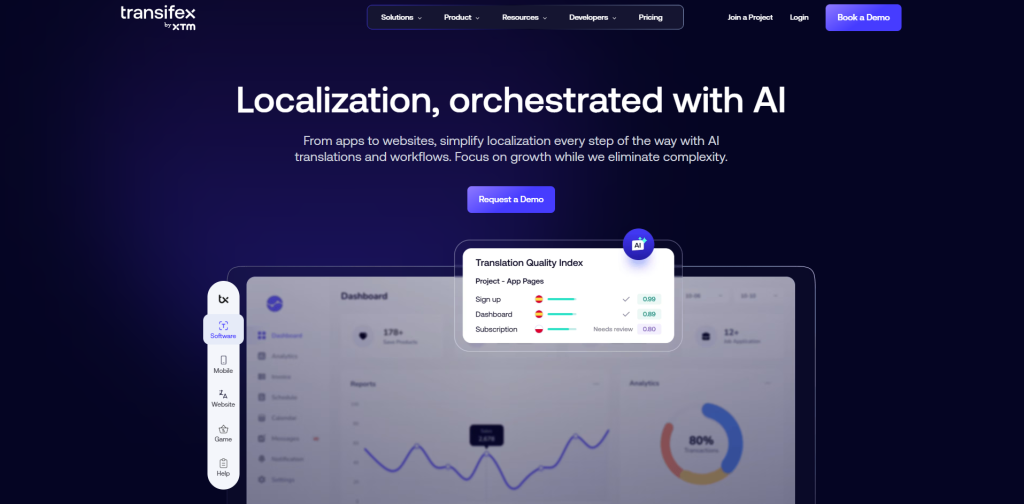
For global businesses managing multi-language content across diverse teams and platforms, Transifex offers one of the most comprehensive localization ecosystems available today.
Built with scalability and control in mind, it’s engineered to streamline complex translation workflows across departments, vendors, and tools.
Strengths
At the heart of Transifex is its Translation Quality Index (TQI), a proprietary scoring system that monitors translation quality in real-time, ensuring consistent output across all languages and projects.
This is particularly valuable for businesses juggling multiple content types, from product catalogs to help centers and mobile apps.
The platform offers extensive automation features, including Transifex Live, a JavaScript-based solution that allows in-browser content translation updates without developer involvement.
It integrates with over 600 tools and platforms, including Shopify, GitHub, and custom APIs, making it highly adaptable for complex tech stacks.
Weak Spots
That complexity comes at a cost, both financially and operationally.
With pricing starting at $120/month, Transifex is priced well above the other tools.
Setup also tends to require tons of technical resources, particularly for custom integrations or bulk content imports.
Smaller businesses may find it more robust than necessary, and the costs for proper integrations might be over their budgets for this task.
Best For
Large enterprises or companies with dedicated localization teams, multiple languages in play, and complex content pipelines across marketing, development, and support.
Pricing
Starts at $120/month, scaling with feature tiers and translation volume. Enterprise pricing available for advanced needs.
This spicy pricing makes it one of the most expensive alternatives to Google Translate.
2. Smartling: AI Meets Human Touch
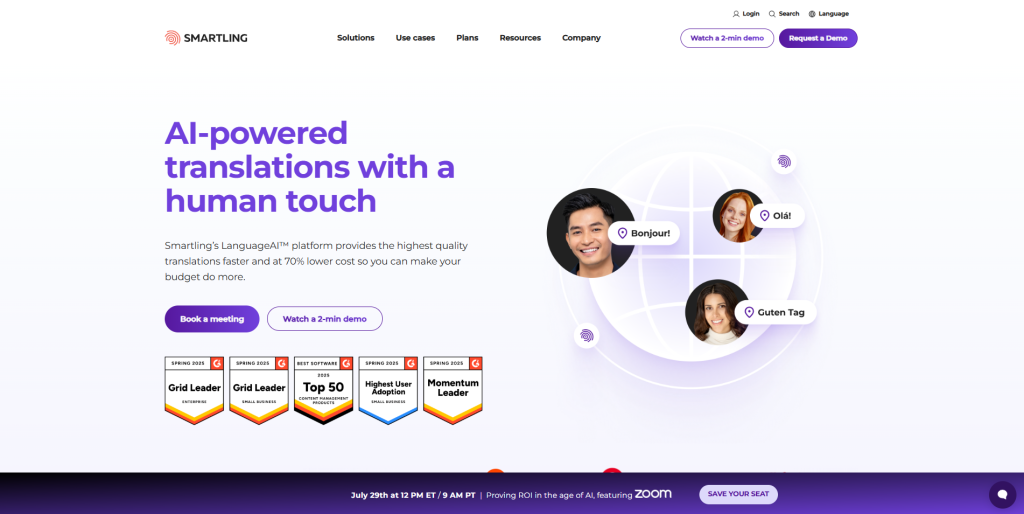
For brands operating across highly competitive international markets, Smartling offers a sophisticated blend of AI-powered automation and human expertise.
Designed for scale, consistency, and control, it’s built to handle enterprise-grade localization with minimal disruption to day-to-day operations.
Strengths
Smartling’s Neural Machine Translation (NMT) Hub leverages multiple MT engines, including Google, DeepL, and Amazon, then layers in brand-specific terminology, tone guidelines, and translation memory.
This ensures the system delivers context-aware translations that reflect each business’s unique voice.
Its Global Delivery Network (GDN) uses proxy technology to automatically capture and translate website updates, no code changes required.
That makes it ideal for businesses with high content velocity and limited engineering bandwidth. It also integrates with major CMS platforms like Contentful, Drupal, and Webflow, enabling seamless localization across web properties.
Weak Spots
The platform’s extensive feature set is reflected in its pricing.
Smartling is positioned at the enterprise tier, making it less accessible to small or midsize businesses. It may also be more than what’s required for companies with simpler translation needs.
Best For
Global enterprises with high-stakes, high-volume content who want fine-tuned control over brand voice, workflow automation, and access to both AI and professional linguists.
Pricing
Custom pricing only, based on content volume, service level, and integration requirements.
Whenever the price is not public, you know it’s gonna be expensive 🙂
So that’s why we will place Smartling amongst the expensive alternatives to Google Translate.
1. Ovesio – The European E-Commerce Specialist 🏆
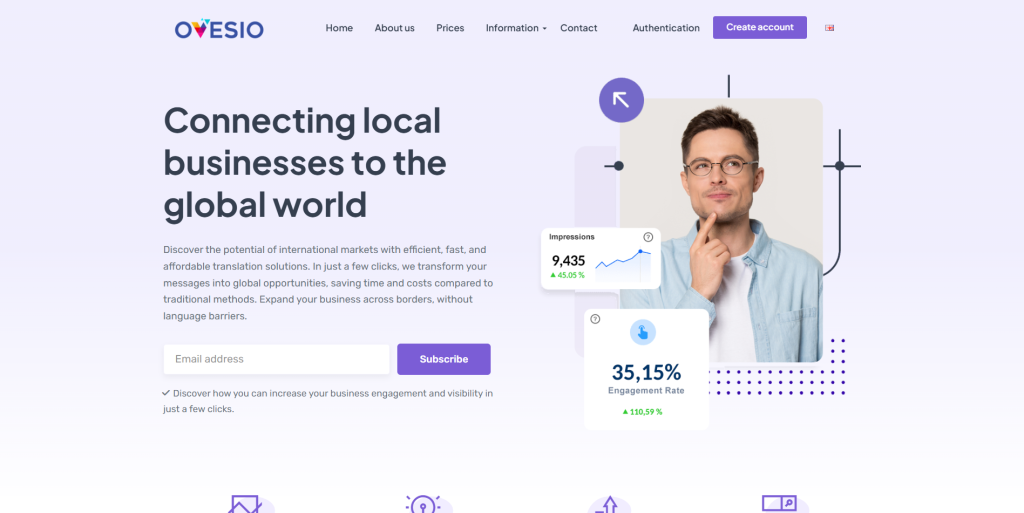
When it comes to e-commerce translation in Europe, Ovesio stands in a class of its own.
Built specifically for the complexities of the European market, Ovesio combines automation, precision, and cost-efficiency in a way few others can match.
Strengths
Ovesio’s core advantage lies in its multi-engine AI architecture, which intelligently blends the best of DeepL, Google Translate, OpenAI, Bing, and Gemini.
For each translation, Ovesio’s proprietary algorithm selects the most accurate engine based on language pair, content type, and context, delivering results that are up to 95% as accurate as human translators.
Supporting 27+ European languages, Ovesio is finely tuned for the region’s linguistic and cultural diversity.
Unlike generic platforms, it automatically generates SEO-optimized product descriptions, hreflang tags, and localized meta content, ensuring your storefront is not only accurate, but visible.
Its platform is fully automated and incredibly fast, capable of translating thousands of SKUs in no time.
Advanced features include:
- Compound text support (titles, attributes, and descriptions across categories)
- Product feed automation
- Translation memory reuse to avoid duplication and reduce costs
- Custom dictionaries and term management for brand consistency
Best For
Any e-commerce business, from SMB to enterprise, targeting multiple European markets and looking for a solution that delivers human-like quality at machine-level speed and cost-efficiency.
Pricing
With costs up to 95% lower than traditional human translation services, Ovesio enables scalable localization at a fraction of the price, often for just 1% of the usual cost.
Full API access ensures seamless integration with modern e-commerce stacks.
Starting at $33/month it is accesible and easy to use for all E-Commerce businesses.
That’s why Ovesio is at the top of the list when it comes to alternatives to Google Translate.
Conclusion: Why Ovesio Is a Smart Strategic Move
Each platform reviewed brings something valuable to the table, whether it’s DeepL’s linguistic fidelity, Transifex’s enterprise-grade control, or Weglot’s simplicity.
But for e-commerce businesses operating in Europe, Ovesio stands apart.
It merges premium translation accuracy, multilingual SEO readiness, and lightning-fast automation, all while remaining 95% as accurate as human translation at just 1% of the cost.
That’s not just innovation, it’s leverage.
More importantly, Ovesio was built with European regulations and business practices in mind.
For brands serious about scaling across borders with confidence, efficiency, and cultural precision, Ovesio isn’t just an option… it’s a MUST.
FAQ: What E-Commerce Teams Need to Know About Translation Tech
1. Is Google Translate really not enough for e-commerce?
No. While it’s fine for casual use, Google Translate falls short where it matters most for e-commerce:
- No SEO optimization (missing hreflang tags, broken URLs)
- Inconsistent brand tone across products and regions
- No integration with product feeds, checkout flows, or CMS platforms
It’s a blunt tool in a market that demands precision.
2. What’s the best translation tool for European markets?
Ovesio leads here, combining multi-engine AI (DeepL, Google, OpenAI, Gemini, etc.), and native support for 27+ European languages. It’s built for the continent’s complexity, both culturally and legally.
3. Which tool is easiest to implement without code?
Weglot and ConveyThis both shine for non-technical teams. Their plug-and-play installs make it easy to get multilingual sites live in minutes, no dev resources required.
4. Which platform offers the best ROI?
While DeepL boosts productivity with its high translation accuracy, Ovesio is a game-changer on cost:
- Up to 80–95% savings over traditional services
- Fast, automated delivery
- SEO system baked in
For businesses scaling across borders, Ovesio delivers translation ROI at enterprise scale.
5. Do I need human translators, or can AI be enough?
In most cases, AI is enough, especially for product pages, metadata, and routine content.
- 80–90% of e-commerce translations can be handled by advanced AI
- For high-stakes or brand-sensitive copy, use platforms like Ovesio or Smartling, which offer hybrid AI-human workflows with QA layers built in.



